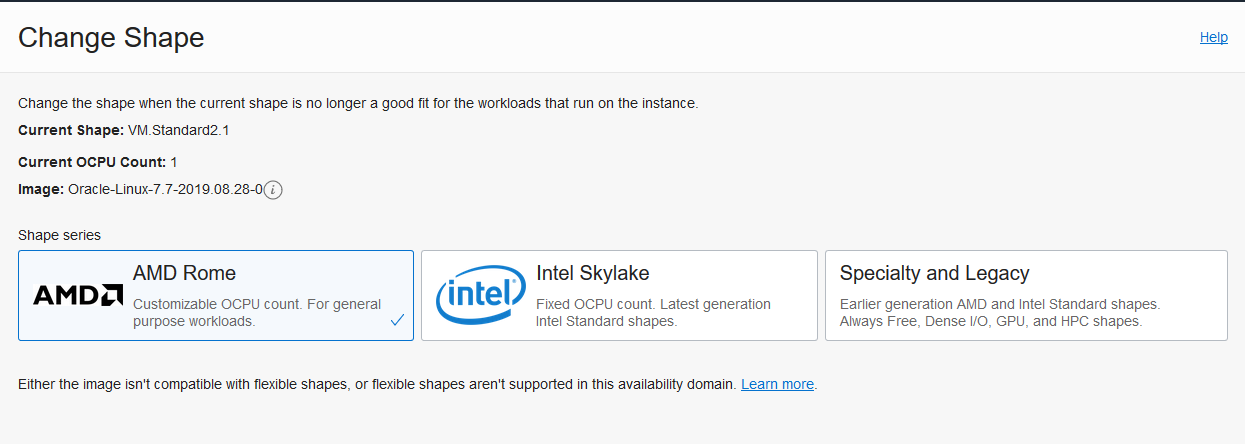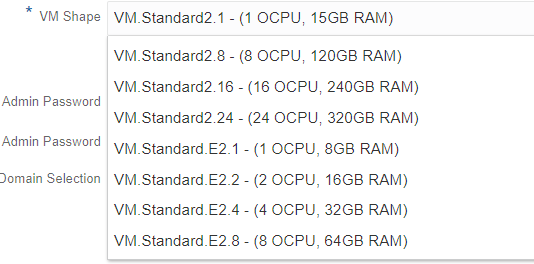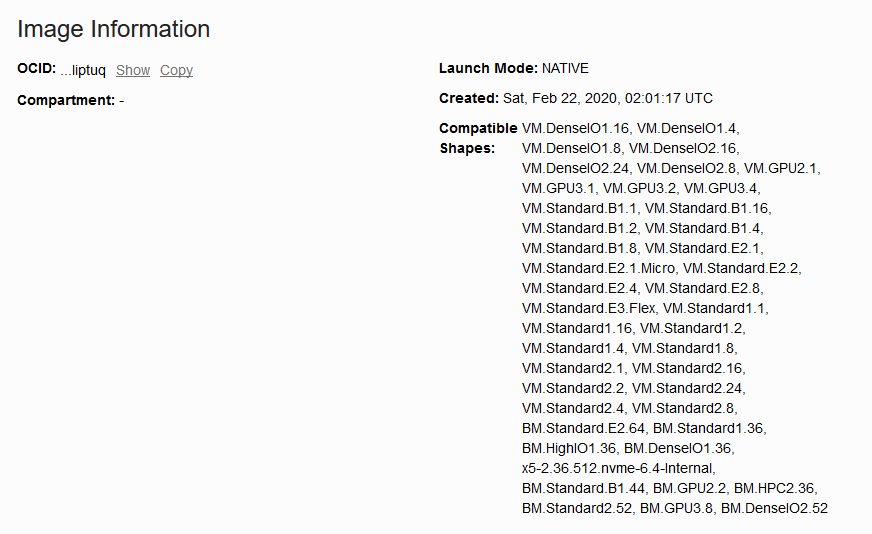
Recently Oracle announced the availability of a new CPU shape E3. Flex in its Oracle Cloud Infrastructure - see here. The announcement promises an increase in performance of around 50% compared to the current Intel CPU (e.g. in VMStandard2.x) at the same or lower cost. Reason enough for me to take a closer look at this in the area of operating the E-Business Suite on such instances.
First Attempt: Changing an existing instance
For a first test I tried to change the shape of an existing (VMStandard2.4) instance to E3. Unfortunately, this failed because the image I used for this instance was too old (3 months old EBS@OCI instance):

Since it is an image provided by Oracle, it is unfortunately not possible to overwrite/change it - even if I had patched my Oracle Linux to be compatible with flexible shape. The only workaround I see would be to create a custom image and adjust it to be compatible with the E3.Flex shape.
Second Approach: Cloud Manager 20.1
Oracle recently published Oracle E-Business Suite Cloud Manager 20.1, more precisely 20.1.1.0.1. Unfortunately, even there I am not able to choose E3.Flex shapes for newly created (or restored from Backup) E-Business Suite instances:

I am working with Product Management/Development for the Cloud Manager tools to make this available.
Nevertheless, there is some good news: When creating a new environment with a VM.Standard2.x shape, a current OS image is used that is actually compatible with the E3.Flex-Shapes:

So after creating the instance (which is still done with the "old"/"slow" Intel CPU) you can change the shape via the OCI console (which triggers a reboot of the VM).
Note: Unfortunately you cannot convert an E2.X VM into the E3.Flex shapes, this gives the following error:
Requested shape: VM.Standard.E3.Flex belongs to a hardware series that is not compatible with the current shape: VM.Standard.E2.1
However, now that I have been able to get an E3.Flex instance, I have done some Performance Comparisons using sysbench (synthetic CPU performance) and OraPub Speed Test 3.
Performance with VMStandard.E2.4
As a reference the VMStandard.E2.4 gave me the following orabench performance on a 19c database instance:
Speed Factor (higher is faster) : 184.655 <----
Performance with VMStandard.2.4
sysbench
With the following parameters:
[oracle@dbupg9db ~]$ sysbench --test=cpu --threads=8 run
I managed to get the following CPU Speed:
Events per second: 5500.55
orabench
The orabench value of the VMStandard2 CPU is appx. 40% higher than the E2 instance:
Speed Factor (higher is faster) : 255,4681 <----
VMStandard.E3.Flex (4 Cores, 64GB memory)
But now let's have a look at the performance of the brand new E3 CPU.
orabench
The orabench Speed factor is appx. 20% faster than the Intel Xeon CPU
Speed Factor (higher is faster): 305,3364 <----
sysbench
The sysbench compares similar; also there we get appx. 20% more performance:
[oracle@dbupg9db ~]$ sysbench --test=cpu --threads=8 run
events per second: 6777.76
Pricing
It becomes even more interesting when comparing the value per price. Let's take a look at the "per Cent" performance with orabench with the 4 benchmarks mentioned above (all tested on 4 core CPUs):

Summary
- The new E3 shape has a similar "performance per price" as the old E2 shape had. The "value" and "absolute performance" is much better than the Intel Xeon VMStandard.2 cores.
- This makes OCI an even better alternative to AWS in terms of "performance per price".
- Finally, the higher "absolute" performance values are a big benefit when operating e.g. Oracle Databases licensed "per core". In that scenario, I have preferred VMStandard2.x over the E2 shapes in the past. But now I can also choose the AMD E3 Epyc CPU.


